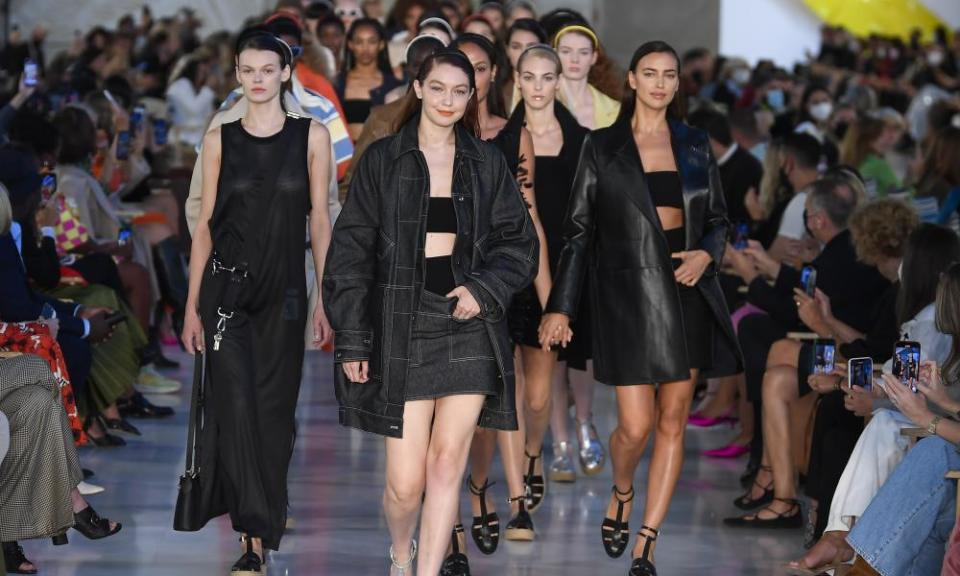Max Mara’s British designer brings a bit of beatnik to Milan

The critic who in 1959 called the writer Françoise Sagan a “luxury hotel existentialist” didn’t mean it as a compliment. But for Ian Griffiths, the British designer of Max Mara, the phrase is a way of making sense of returning to the pomp and finery of the Milan catwalks after spending much of the pandemic reading existentialist novels at home in Suffolk.
“Did you know that sales of Camus doubled last year?” asked Griffiths backstage, as photographers hustled past in search of the supermodels Gigi Hadid and Irina Shayk, who starred in the show.
“Everyone was sitting at home exploring their inner landscape. There is always an intellectual framework to what I do, but I had more time than ever to think. And now, like lots of people, I am loving being able to go out in the world and rediscover the sheer joy of life, but there is also this rediscovered inner space that feels important as well.”

Thinking about how fashion both reflects and idealises the outside world led Griffiths to Sagan. When aged 17 and having failed her baccalaureate, Sagan was forbidden from going on holiday and instructed to stay home and study. Instead, she wrote a novel, Bonjour Tristesse, in which she idealised the perfect summer of sun-dappled romance and intrigue she imagined herself to be missing out on.
“So I was thinking about how that’s what we’ve all been doing. We have been imagining an ideal version of what we’ve been missing,” explained Griffiths. With stills from the 1957 film of Sagan’s novel on his mood board – Jean Seberg with a blue cotton shirt knotted over her swimsuit, Deborah Kerr in a smock with a turtleneck collar – he applied the beatnik style principles of workwear and simplicity to a contemporary summer wardrobe. There were miniskirts with baseball vests, functional short suits, and chunky sandals. Deckchair stripes brought a pop of summer escapism, in between lashings of black.
Alongside the supermodels, the casting of the show was extended to include – unusually for Milan catwalks – models who were neither plus-size nor rail-thin, but in between.
“Runway fashion is often regarded as being about a fantasy, but I think when Max Mara works it is precisely because it is not just a fantasy. The power of this brand is in its reflection of reality. What we do here is to project what you see on the street back at you in its most perfect form, and diversity is an essential part of that,” said Griffiths.

